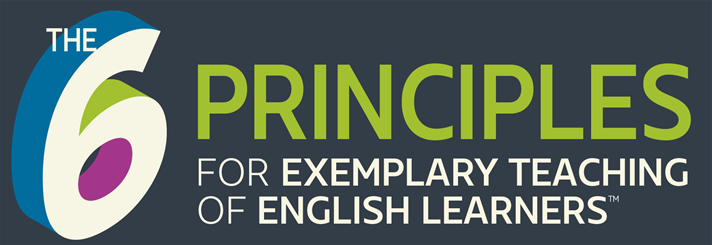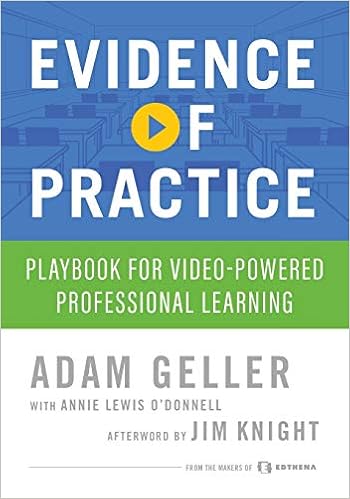
Allison Briceño, Eduardo Muñoz-Muñoz, and Claudia Rodríguez-Mojica present reasons and suggest solutions for the chronic shortage of Spanish/English educators in California
It is an exciting time for bilingual education in California due to changing political tides and recent research. Proposition 58, which passed in November 2016 with 73% voter approval, repealed the limitations placed on bilingual education by Proposition 227 in 1998. The English Learner Roadmap, adopted by the California Board of Education in July 2017, recognizes both the importance of multilingual education and the assets that multilingual students and their families bring to schools. It requires schools to provide all students access to appropriate, challenging curriculum, including languages other than English.
Additionally, dual language (DL) programs are extremely popular and have emerged as the most effective programs for multilingual students’ academic success (Lindholm-Leary and Hernández, 2011; Steele et al., 2017; Valentino and Reardon, 2014). As a result, recruiting and preparing bilingual teachers has become a matter of social justice.
However, the political movement toward English-only education of the previous 20 years has resulted in bilingual teachers becoming “an endangered species” (Katz, 2004, p. 147). The current dearth of bilingual teachers could inhibit the opportunity for growth in bilingual education programs. There are many Spanish speakers in the U.S. who could become bilingual teachers; how do we bring them into the bilingual teacher pipeline (Katz, 2004)? To begin to answer this question, we recently researched how heritage Spanish-speaking (HSS) preservice teachers’ beliefs about language influenced their choice to enter bilingual or English-only teacher preparation programs.
A Vicious Cycle
Guerrero and Guerrero (2008) labeled the bilingual teacher shortage a “vicious cycle.” Without access to bilingual education, how can we develop bilingual teachers? The bilingual teacher shortage is a result of the way we “do school” in the U.S. The linguistic and cultural hegemony in schools limits access to home-language development, resulting in home-language loss and English dominance regardless of home language (Guerrero, 2003).
Furthermore, a perceived binary between academic and conversational language may be misleading (Alvarez, 2012; Aukerman, 2007; Valdés, Capitelli, and Alvarez, 2011), causing speakers to question whether their language is “academic” enough (Guerrero, 2003; Musanti, 2014).
Valdés (2001) argued that the “idealized, perfectly balanced bilingual is for the most part a mythical figure that rarely exists in real life” (p. 40). Instead, bilingualism (Valdés, 2001) and biliteracy (Hornberger and Link, 2012) exist on dynamic, shifting continua. Yet bilinguals speaking nonprestige or stigmatized language varieties are often associated with lower socioeconomic status (Valdés, 2001).
The Study
We interviewed eleven HSS college graduates enrolled in teacher credential programs at three universities in California. At the time of this study, two of the universities offered a bilingual authorization pathway (BAP) and one of the universities had not yet started offering the BAP option. We drew HSS participants from both the bilingual and English-only teaching credential pathways.
Five of the teacher candidates were in bilingual authorization programs and six were in English-only teaching credential programs; all were considering becoming bilingual teachers. Nine participants were born in the U.S. and two were born in Mexico. We interviewed each participant individually for 25 to 40 minutes and followed a constant comparative method (Charmaz, 2006) to analyze data. The audio files of each interview were coded by two researchers using software, recursively, in multiple phases.
Living—and Overcoming—the Vicious Cycle
Our study identified two obstacles to, and one primary reason for, HSS participants’ entry into bilingual teaching. First, many participants were unaware that teaching in a bilingual setting was an option. Second, the HSS participants were concerned about
their academic Spanish after being told by schools, in various ways, to leave their Spanish at home.
The HSS participants who were planning to become bilingual teachers shared a focus on equity and wanted future generations of Latinx children to have better schooling experiences than they had (Irizarry and Donaldson, 2012).
“No Me Acuerdo Haber Escuchado de Programas Bilingües.” (I Don’t Remember Having Heard about Bilingual Programs.)
Having attended school under Proposition 227, which strictly limited bilingual education options in California, most preservice teachers had been immersed in monolingual English schooling systems and were unaware that their linguistic assets were needed and wanted in bilingual education. Eight of the eleven preservice teachers did not know they could become bilingual teachers and, consequently, initially entered monolingual teacher preparation programs. They often learned that they could acquire a bilingual authorization at the program orientation. For example, Maritza said, “It was just at orientation for the program that I knew it was an option.” Similarly, Angelina stated, “El programa ofrecía una extensión bilingüe, yo no me acuerdohaberescuchadode programas bilingües.” (“The program offered a bilingual authorization, I don’t remember having heard about bilingual programs.”) Echoing the first two participants, Clarisa mentioned, “Once I started at [university name], that’s when I found out that I could get a credential and at the same time get that bilingual certification.” Sara was prompted by a professor to consider becoming a bilingual teacher and said, “Honestly, had I not had [name] as a professor, I would have ended up as an English-only teacher.” Clearly, more information about pathways to becoming bilingual educators is needed in K–12, community college, and university settings.
“I Didn’t Get a Chance to Learn Academic Spanish.”
As graduates of U.S. colleges, the participants felt confident in their academic English; however, most were concerned about their academic Spanish-language skills. Speaking colloquial registers of Spanish at home that have been perceived as marking lower socioeconomic backgrounds, many participants took advanced Spanish classes to learn “academic Spanish,” but those classes invalidated their home language in favor of textbook language. For instance, Janet took Spanish classes in high school to learn what she understood as “appropriate Spanish or correct Spanish.” She stated, “The Spanish that I thought was Spanish growing up was totally incorrect and improper… and that’s where the self-esteem issues came. I started feeling like what I had learned was totally incorrect.”Like Janet, many participants came from lower SES backgrounds and were therefore concerned that their Spanish was not good enough to qualify them as teachers.
The HSS participants also worried about whether the particular variety of Spanish they spoke was the “right“ Spanish, and they expressed concern about using regional vocabulary that is not shared widely across Spanish-speaking countries.
Maritza commented: “I sometimes feel a little uncomfortable because I learned Spanish at home, and I didn’t get a chance to learn academic Spanish, or because my family’s Spanish is very regional.
“I’m very aware if whatever I’m sayingmightbea regional difference orif I’m teachingstudentsthewrong word for something.”
There are many Spanishes spoken all over the world and within the U.S., yet Maritza expressed concern that her family’s Spanish was not the “right“Spanish. Rather than recognizing it as language variation, she used a binary measure of “right“ and “wrong“ and assumed that since she learned Spanish from her family and not in an academic setting, it must be wrong. Ironically, participants were unable to define “standard Spanish,“ yet they were concerned that their Spanish was not standard and was insufficient. When pressed, Joel vaguely referred to Spain’s Real Academia.Angelina simply said, “Noséqueeselespañol estándar.“ (“I don’t know what standard Spanish is.“)
With the exception of one participant who had attended a dual-language program, the HSS participants unanimously referred to the start of school in the U.S. as the beginning of their Spanish language loss, reflecting Guerrero and Guerrero’s (2008) vicious cycle of linguistic hegemony. Many HSS participants had been classified as English language learners (ELLs) when they were in school.
One noted the irony, stating, “Yo fui uno de esos English language learners, o antes se decía ESL (English as a second language)… ahora soy un SL, Spanish learner.“(“I was one of those English language learners (ELLs), or they used to say ESL (English as a second language), now I’m an SL, Spanish learner.“) Rather than developing HSS participants’ first language, the English-only emphasis of U.S. schools led to home-language loss and the perceived need for re-education in Spanish.
“Bilingual Education IsaPush toward aMore Equitable Education System.”
The HSS participants who were considering becoming bilingual teachers were concerned with educational equity and viewed bilingual education as a form of advocacy and agency (Dubetz and de Jong, 2011). Griselda commented, “Bilingual education is a push toward a more equitable education system, and I think being part of that is a constant reminder of wanting equity in education.” Griselda understood how developing a greater appreciation of bilingualism and participating in a school system that values multiple languages would be supportive of Latinx students and families.
Similarly, when asked about his decision to become a bilingual teacher, José also considered equity for the Latinx community: “That [decision] was partly equity focused, because I know that a lot of students don’t have English as a first language and a lot of those students are Spanish speaking… Bilingual classrooms help with that. And just having a teacher who understands their language would also help the student, and also the parents. The communication between the teacher and the parents is so important.”
José identified the ability of both parents and teachers to better support students when the language barrier is removed.
The participants understand that bilingualism is an asset in very personal ways; they live bilingualism and recognize that it is a generally unacknowledged strength Latinx students bring to school. As Maritza said, “I would want to teach in a bilingual [setting] because I’d be so aware of tipping the balance in another way for minority languages, even though it’s not a minority (laughs).” Despite the large number of Spanish speakers in the U.S., and particularly in California, Spanish still suffers from minority language treatment—it is undervalued due to its speakers’ lack of political power in the U.S. The participants in this study perceived bilingual education, and their future role as bilingual teachers, as one lever to improve the educational opportunities for Latinx students.
Moving Forward
In summary, a monolingual education system played a role in participants’ questioning of their Spanish abilities, as their bilingualism was not viewed as an asset and was not developed in school. Instead, when many enrolled in advanced Spanish courses, their home language was, perhaps inadvertently, denigrated as “slang,” “regional,” or “totallyincorrect,” resulting in feelings of inadequacy that may have negatively influenced their decision to teach in a bilingual setting. Yet the opportunity to ensure that future generations of Latinx students do not suffer what they did attracts them to the field of bilingual education.
Since schools serve linguistically and racially diverse students, it is imperative that they adopt policies and practices that validate HSS participants’ home language and culture.
Pre-K–12 language classes, college coursework, and teacher preparation (not only bilingual but all teacher preparation) should address critical sociolinguistic concepts that explore the relationships between language, race, and ethnicity in education. Similar concepts should also be embedded in administrators’ preparation if they are to effectively lead bilingual schools and support bilingual teachers’ implementation of theoretically
grounded practice.
Understanding that every speaker of a language speaks a variety of that language, and that language varieties are not inherently “bad“ or “good,“ could help heritage speakers view their home language as legitimate and potentially reduce the number of bilingual youth who steer away from the bilingual teaching profession due to concerns regarding their variety of Spanish.
State and national policies that support and incentivize bilinguals to become teachers are needed (Hopkins, 2013; Musanti, 2014; Ocasio, 2014); our goal should be to develop a self-sustaining ecosystem of multilingual future educators who legitimize students’ home language practices so that those students might consider becoming bilingual teachers in the future.
Allison Briceño, EdD, is assistant professor in the Department of Teacher Education at San José State University, CA, where she coordinates the reading specialist credential/MA program. Dr. Briceño’s research centers on improving literacy instruction for English learners and bilingual students.
Eduardo Muñoz-Muñoz, PhD, is affiliated facultyat San José State University. His current research projects focus on critical pedagogy and the development critical language awareness in (bilingual) teachers. He has engaged with districts in the design and implementation of dual-immersion programs and the support of emergent bilinguals.
Claudia Rodríguez-Mojica, PhD, is assistant professor of education and bilingual teacher education coordinator at Santa Clara University, CA. She has been working to improve the academic outcomes of emergent bilinguals for more than ten years.
For more information about this study, please see: Briceño, A., Rodriguez-Mojica, C., and Muñoz-Muñoz, E. (2018). “From English Learner to Spanish Learner: Raciolinguistic beliefs that influence heritage Spanish speaking teacher candidates.“ Language and Education, 32(3), 212–226. DOI: 10.1080/09500782.2018.1429464
Reoriented from the Multilingual Educator, March 2019, with permission from the California Association for Bilingual Education (CABE).











